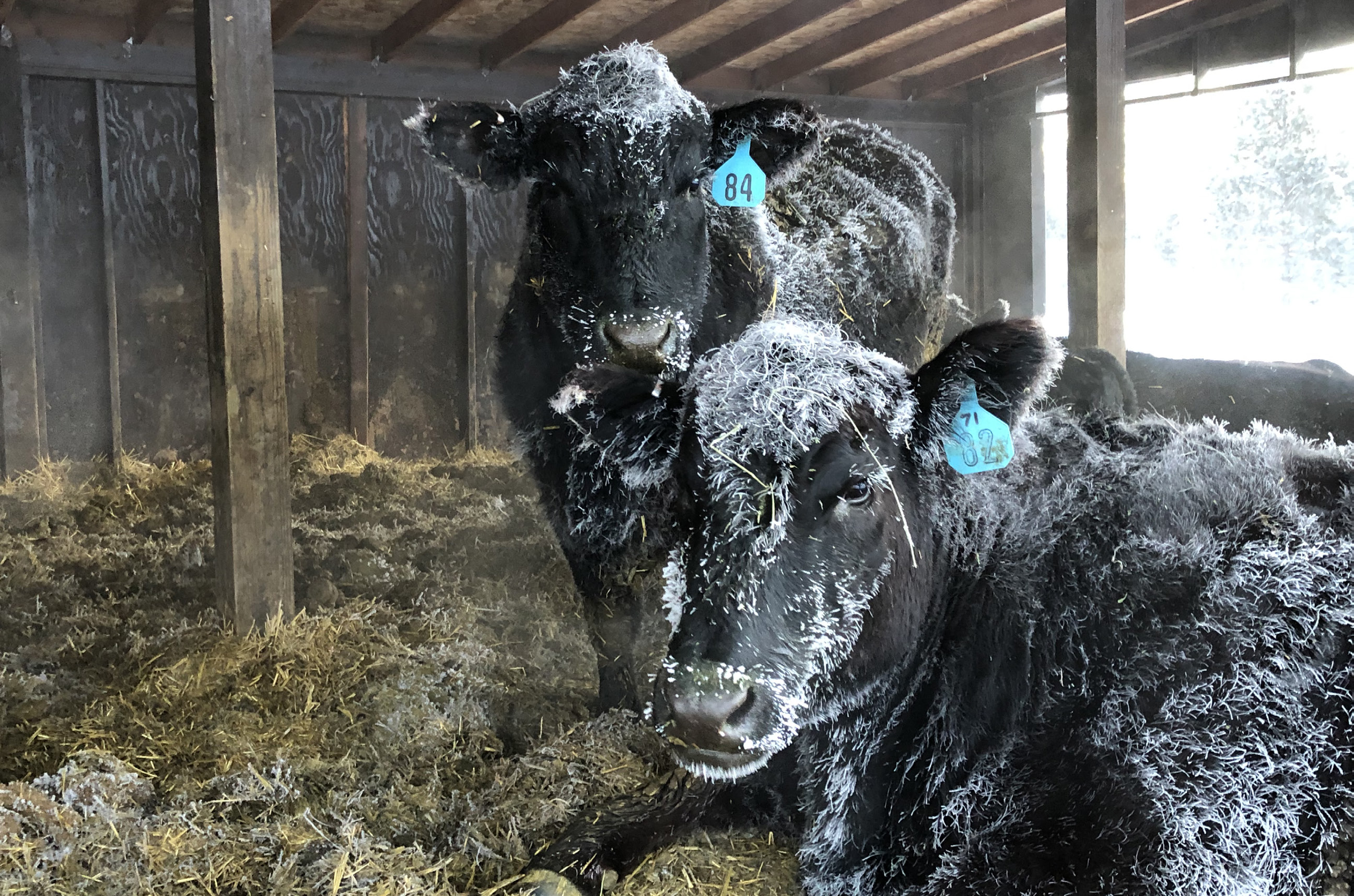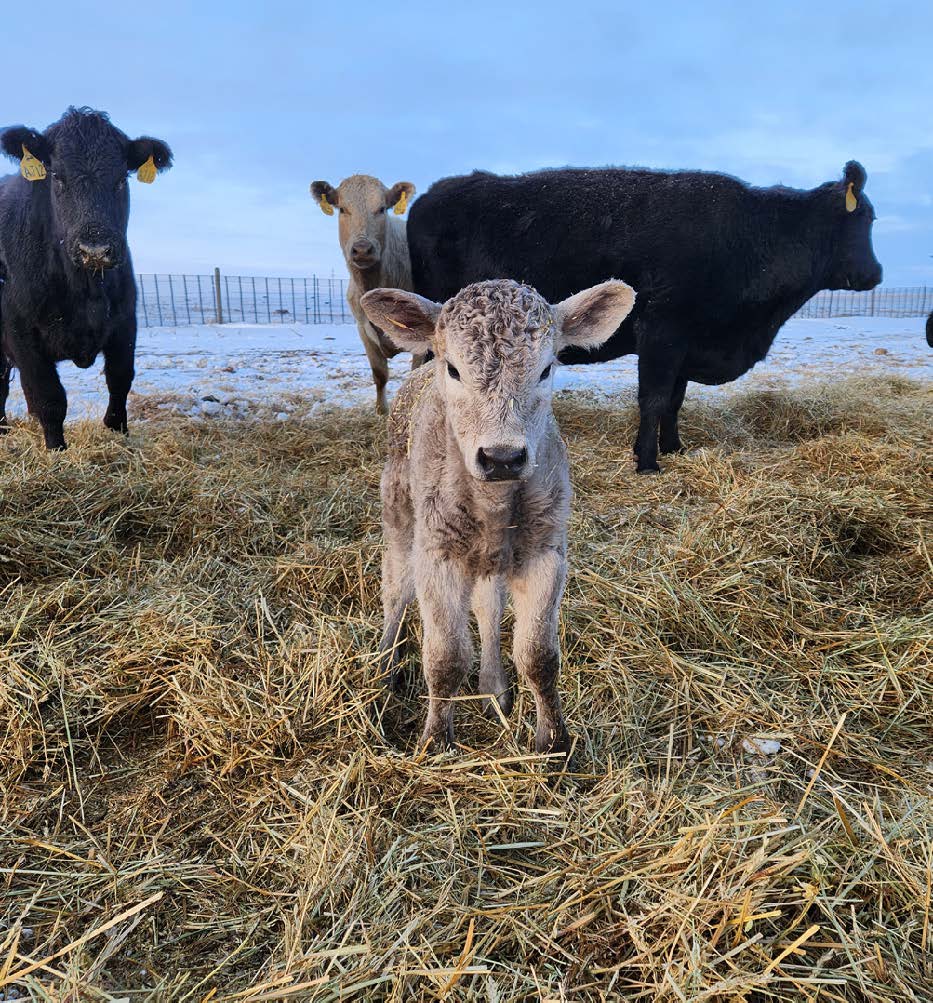Managing Nutrient Requirements of Beef Cattle through Fall and Winter
Developing a nutritional program that meets the needs of beef cattle throughout the production cycle requires an understanding of how cattle partition nutrients. It also involves considering the factors that impact overall nutritional requirements to ensure a successful calving season and a return to healthy body condition before the next breeding season.
Typically, the beef production cycle can be broken into four stages: 1) calving to breeding, 2) breeding to weaning, 3) after weaning, and 4) pre-calving. Cattle utilize nutrients based on specific biological priorities: maintenance, growth, lactation, then reproduction. Due to reproduction being last on the priority list, it is the first factor impacted by inadequate nutrition.
Cattle that graze forages post-weaning through the fall and winter face unique challenges. After weaning, cattle are no longer lactating, resulting in their lowest nutrient requirements in the production cycle. Thus, this stage of production represents the most economical time of the year to impact cattle condition through nutrition management.

Photo: Patrick Mangan, MSU Extension
Most grazed forages have reached maturity and dormancy in the fall. However, dormant forage likely doesn’t meet cattle nutrient requirements. Thus, grazing low-quality dormant forage can result in decreased cattle performance, even for a non-lactating cow. Providing protein supplements to grazing beef cattle during times of low forage quality can improve animal performance. Grain-based supplements can have negative impacts on the digestibility and dietary consumption of low-quality forage (5-8 percent Crude Protein). This is because dormant forages are typically deficient in protein and high in fiber, which physically limits dietary intake. Protein supplementation helps by stimulating the cattle’s protein-starved rumen microbial communities, thereby enhancing digestibility and increasing dietary consumption to meet nutritional requirements with high-fiber, low-quality forages. In general, late in the second trimester into the third, cattle grazing low-quality dormant forage will require 0.5-1 pounds of supplemental protein (approximately 2.5-5 pounds of a 20 percent crude protein supplement per head, per day). However, growing heifers require a higher concentration of protein in the diet due to increased requirements for growth and a lower capacity of forage intake. With proper protein supplementation, cattle can maintain and potentially gain weight and improve body condition while grazing dormant forage. Thus, grazing stockpiled forages in the fall and into winter can be a useful strategy to reduce the hay/feeding cost with an adequate protein supplementation program.
The latter part of the third trimester has a major impact on cattle nutrient requirements, as approximately two-thirds of fetal growth occurs in the last 60 days prior to calving. Additionally, if calving is projected to start in winter, weather can increase the nutrient requirements of cattle to maintain body temperature or the thermal neutral zone. Generally, cattle are estimated to increase energy requirements by one percent for every degree below 32 F in dry conditions, and two percent for every degree below 59 F in wet conditions. This increase in nutrient requirements to maintain body temperature and support fetal growth requires an increase in feed/supplement management to maintain an optimal body condition score.

Photo: Colleen Pegar, MSU Extension
It has been established that cattle entering calving and breeding at body condition scores below five (on a scale of 1-9) have reduced colostrum production and substantially decreased first-service artificial insemination conception rates (FSCR). At calving, thin cows, and those not meeting requirements produce less colostrum, resulting in weaker calves, increased occurrence of scours and other diseases, and reduced calf survival. Furthermore, cows with a body condition score of four or less before breeding can result in pregnancy rates 9-29 percent lower than cows with a body condition score of five or higher. This decrease in conception could be even greater for 2-3-year-olds which still have individual growth requirements. This is because cattle with inadequate body condition at calving or those that have lost condition post-calving take longer to recover from the stress of calving (90 days or more), resulting in lower FSCR, a greater likelihood of open (or unbred) cows, an extended breeding season, an extended calving season the following year, and greater variability in calf weaning rates. Cows with a body condition score of 5-6 at calving are in ideal condition for colostrum production and rebreeding. Managing nutrition to achieve and maintain this target body condition score prior to calving is crucial and may involve adjustments to feeding strategies based on individual cow needs and forage availability.
Nutritional management plays a central role in promoting the health, productivity, and reproductive success of beef cattle. Understanding the specific nutritional requirements of cattle can aid in utilizing low-quality forages with supplementation, allowing producers to optimize herd performance and profitability. Continued monitoring and adaptation to changing forage conditions are key to ensuring that cattle receive the nutrients they need for successful health while consuming low-quality forages.
Sam Wyffels is an MSU Extension Beef Cattle Specialist.
